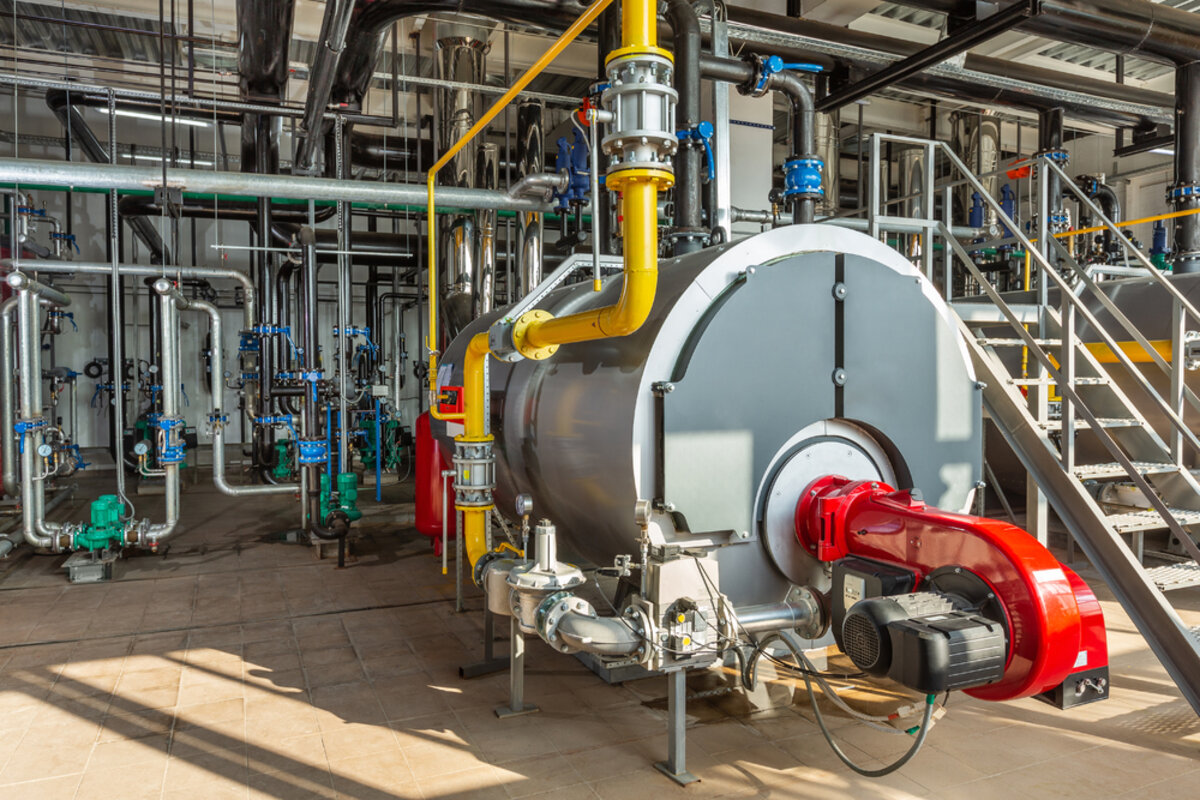Understanding proper startup and shutdown procedures is key to safe, efficient, and long-lasting steam boiler operations. Following these best practices helps boost performance while reducing risks and costly repairs. This guide provides essential steps for safely operating both cold and hot boiler systems.
Importance of Steam Boiler Maintenance
No matter the type of steam boiler, keeping up with regular maintenance is key to making sure any boiler system runs smoothly. When maintenance is overlooked, the system starts to lose efficiency, burning through more fuel than needed and putting extra strain on its parts, which can lead to costly wear and tear.
There’s also a greater chance of unexpected breakdowns or even safety risks. By sticking to a regular maintenance schedule, you can catch potential issues early on and prevent them from turning into bigger, more expensive problems down the line.
Preparing for Steam Boiler Start-Up
Initial Inspection
Before starting the steam boiler, it’s important to conduct a thorough inspection to make sure everything is in order. Begin by checking the valves and connections for any signs of leaks or corrosion, as these can compromise the system’s safety and efficiency. Next, confirm that the fuel supply is adequate and functioning properly to avoid interruptions during operation.
Lastly, verify that the water level is at the correct level; low water levels can cause the boiler to overheat, which risks damaging the system. Taking the time to check these key areas helps ensure safe and efficient operation.
Checklist for Cold Boiler Start-Up
- Visual Inspection: Look for any signs of wear, leaks, or blockages.
- Open Vents: Ensure that all vents are open to allow for proper airflow.
- Fill with Water: Fill the boiler to the recommended level, checking the sight glass for accuracy.
- Check Pumps: Ensure that all pumps are operational and free of leaks.
Safe Steam Boiler Start-Up Procedures
Engaging the Burner
After completing the initial inspections, you can proceed to engage the burner. Start by turning on the control circuit, which activates the systems that manage the burner’s operation. Then, gradually increase the temperature to allow the boiler to heat up slowly, giving it time to expand evenly and minimizing stress on the components. This careful approach helps protect the boiler from potential damage during the startup process.
Monitoring Pressure and Water Levels
During the startup phase, it’s essential to monitor several key elements closely. Watch the pressure gauges to make sure the pressure increases gradually and remains within safe limits, as rapid changes or high pressure can lead to safety risks. Additionally, keep an eye on the water levels, particularly the low water cut-off system, to prevent the boiler from overheating. This careful monitoring helps ensure a safe and stable start-up process.
Safety Checks
Throughout the startup process, conduct thorough safety checks to confirm the system is operating securely. Begin by testing the safety valves to ensure they’re functioning correctly, as these are essential for preventing dangerous pressure build-ups. Also, check that all alarm systems are fully operational and capable of alerting you to any issues that may arise. These safety checks are crucial for maintaining a safe environment and catching potential problems early.
Operating the Steam Boiler
Maintaining Optimal Conditions
Once the boiler is up and running, keeping it in optimal condition is essential for efficient performance. Regularly monitor pressure, temperature, and water levels to ensure everything remains within safe and efficient ranges. Make adjustments as needed to the fuel supply and air intake, fine-tuning these settings to maintain the best possible efficiency. This ongoing attention helps extend the boiler’s lifespan and keeps it running smoothly.
Routine Maintenance Tasks
Incorporate routine maintenance tasks into your operational schedule to keep the boiler running efficiently. Regular blowdown procedures are essential for removing sediment and impurities that can accumulate over time, ensuring the boiler operates without unnecessary strain.
Additionally, using proper water treatment methods helps prevent scale buildup, which can reduce efficiency and lead to costly repairs if left unchecked. By making these tasks a regular part of your schedule, you support the boiler’s longevity and consistent performance.
Proper Steam Boiler Shutdown Procedures
Preparing for Shutdown
When it’s time to shut down the boiler, preparation is key. Follow these steps:
- Turn Off the Burner: Safely deactivate the burner to stop the combustion process.
- Close Fuel Supply: Shut off the fuel supply to prevent leaks.
Sequential Shutdown Steps
- Open Drain Valves: Open all drain valves to allow for complete drainage of water.
- Close Main Steam Stop Valve: Ensure that the steam flow is completely stopped.
- Shut Down Feed System: Turn off the main boiler feed system to complete the shutdown process.
Ensuring Optimal Steam Boiler Performance
Implementing best practices for steam boiler operations, from start-up to shutdown, is essential for safety, efficiency, and longevity. By following the outlined procedures and conducting regular maintenance, you can ensure that your boiler operates smoothly and effectively. Contact Lindberg Process Equipment for more information on maintaining and operating steam boilers.





